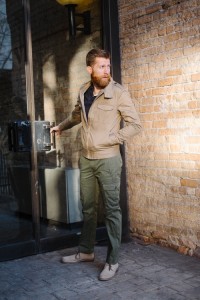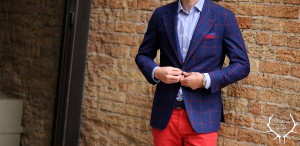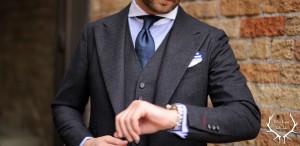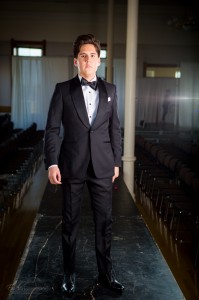A man attending a BYU career fair with dress specifications of business casual may find himself feeling out of place in slacks and a blazer.
In a sea of white shirts and ties, the guidelines for business casual attire are either ignored or misunderstood. There is something to be said for being overdressed rather than underdressed, but ignoring specific dress code instructions can make applicants look like they don’t understand the workplace and professional world.

“Sunday best is the way to go for an interview,” said Senior Director of Sales at Adobe Steve Affleck. “Show the hiring manager you value the position and you’re serious about working there. At a minimum, dress a notch above the standard for that industry. It’s always best to err on the side of formality.”
Casual
Casual attire in the workplace still needs to follow specific guidelines to look professional. Wearing anything with holes, even ones that were purposefully there at the time of purchase, is a no go. Flip flops, sweat pants and tank tops should be reserved for lazy Sundays and the beach.
According to Beckett & Robb style consultant Richard Cutler, Chinos, fitted cargos, chukkas, varsity jackets and beards are currently trending for men’s casual wear.
Business casual

This dress guideline has the widest spectrum of interpretation. In some workplaces, dark wash jeans with a nice pair of shoes are acceptable. In others, slacks, button-up shirts and jackets are the expectation. When dressing for an interview, applicants should err on the side of slacks and shirt. Once they understand the temperament of the company environment, they can modify their look to better match other employees.
“The thing to remember is pattern mixing,” Cutler said. “The trick is to make sure the pattern scales are different. If you’re wearing a large pattern on the jacket, then make sure that you wear a small pattern on the shirt. If you’re wearing a very bold pattern, then don’t wear any other patterns.”
Culter also recommended mixing textures to add flare to a business casual look.
Semi formal

Semi-formal work attire is becoming less common over time. However, some events and companies still have semi-formal expectations. A suit and tie are a safe bet for men, but the shirt doesn’t always have to be white. Light blue or subtly patterned button-ups are acceptable options in many situations. The key to a good suit is fit. Spending hundreds of dollars on a suit and scrimping on tailoring is a mistake. A suit is an investment, and the tailoring is an important part of that.
“The key is to make sure to pick something with a proper fit, and to start with you should buy charcoal or navy,” Cutler said. “You want a suit that demands attention but directs the attention to yourself and not the suit itself.”
Formal or black tie

Black tie dress is usually reserved for company events like parties, galas or fundraisers. Traditional black tie options are strictly black and white. In a formal setting that is not black tie, a solid, dark-colored suit is also appropriate.
Cutler is adamant that styling for formal events should be simple. Maintain a “less is more” attitude to keep looks classic and elegant. Cutler said to go for a slim fit instead of encumbering excess fabric.
“What really sets a tuxedo apart is the simplicity of the lines and the material,” Cutler said.
Tony Tervort is director of marketing at Orem Rehabilitation and Nursing. He is responsible for one-on-one pitches to hospital directors. Those directors see him as the face of the company.
“The way I dress represents everything I’m doing,” Tervort said. “I want to look professional so they know they will get quality service from our company.”
If the dress standard of the company is unclear, then look to superiors for an example.
“It’s important to maintain the culture of the company, and that trickles from the top,” Affleck said. “If the CEO is a jeans wearer, everyone will do the same.”
Affleck’s experience in business has taught him that employees should dress for the job they want, not the job they have.




